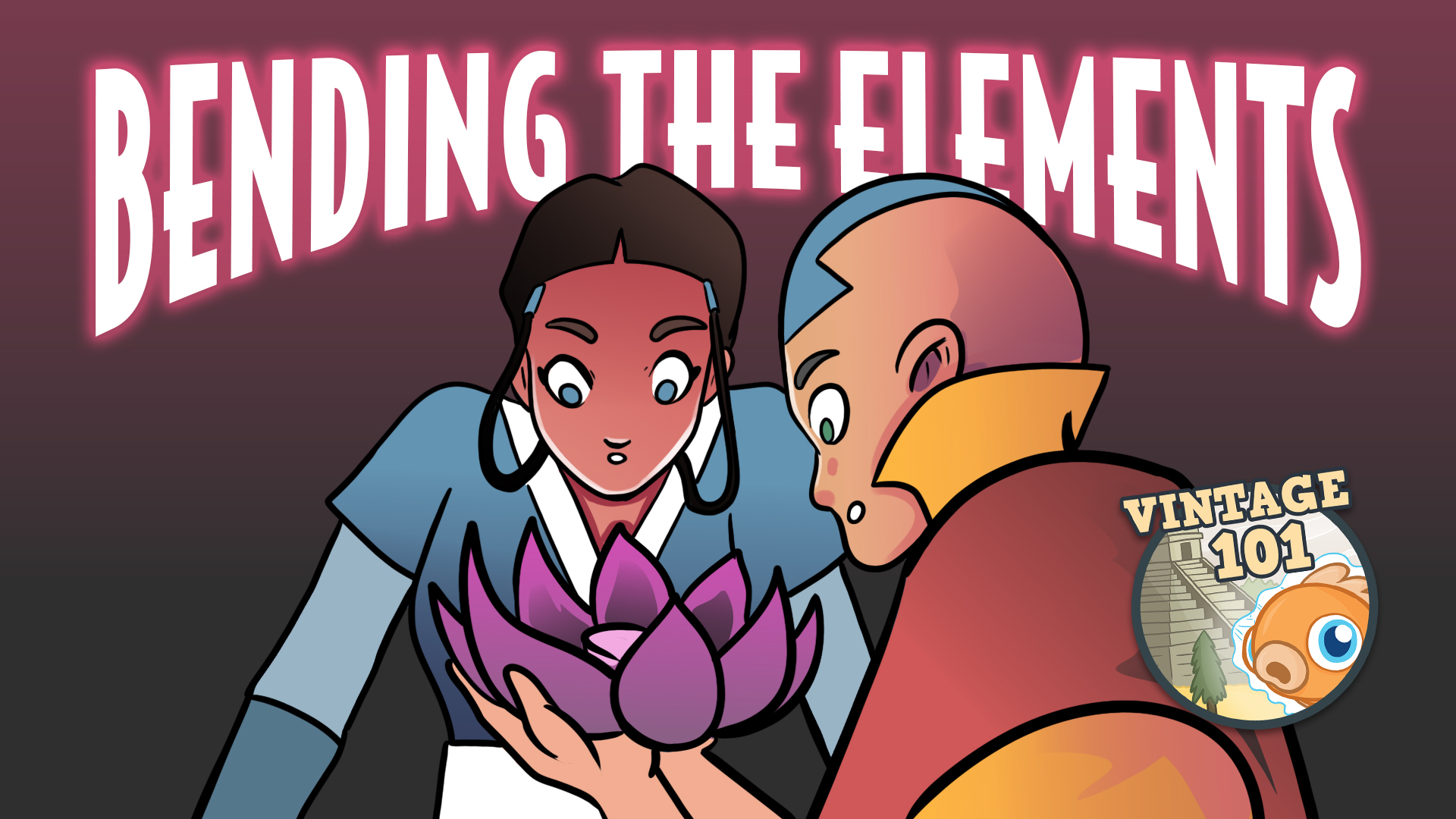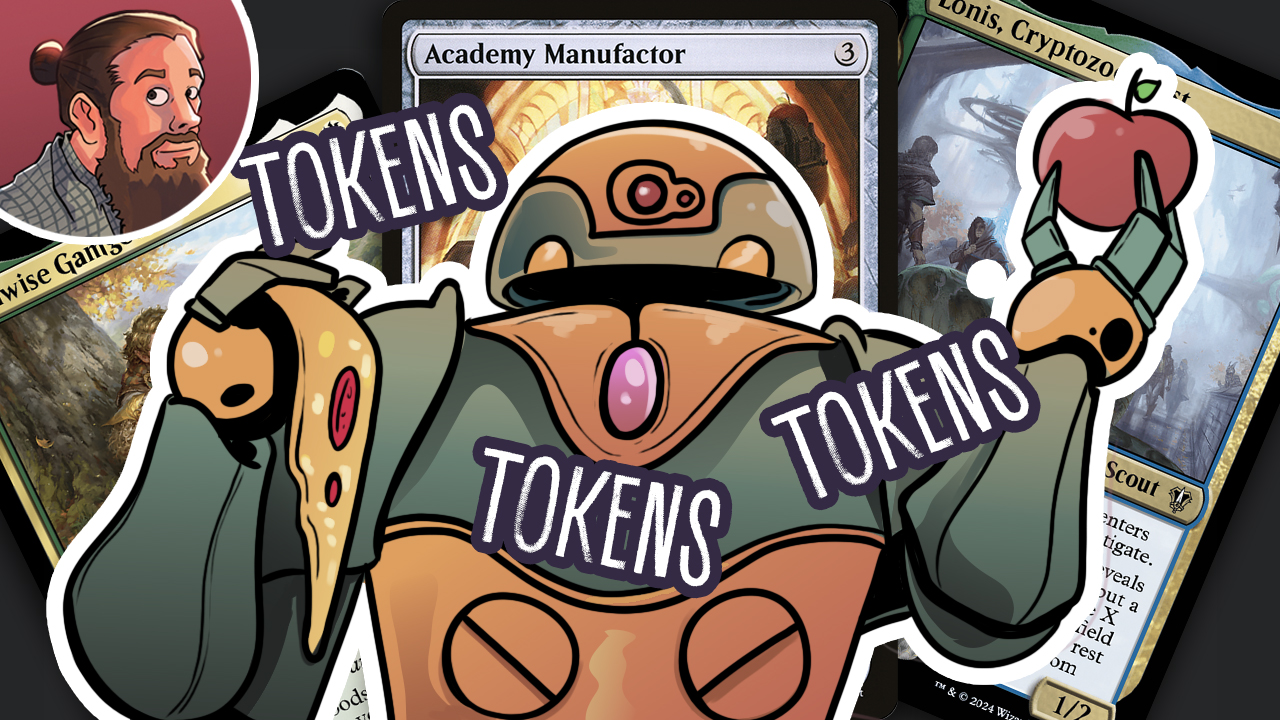Vintage 101: The Eldrazi Invade Vintage!
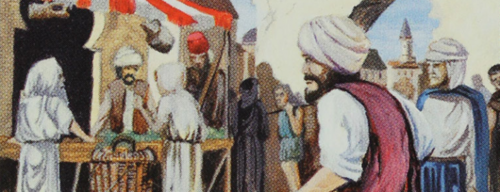
Forgot About Dredge
The monthly Magic Online Vintage Power Nine Challenge tournament was this past weekend, and it was taken down by a Dredge deck. Dredge is the kind of deck that will beat anyone who is unprepared for it, as it has the best game one win percentage of any deck in Vintage. Dredge wasn't the most played or most talked-about deck in the event, but the fact that it won shows it's always relevant to the format.
Before I go on about the rest of the field, I think we should take a look at this Dredge deck. For those of you who are interested in Vintage but think the decks are out of your price range, it is worth noting that this deck costs about the same as a tier-one Standard deck. Dredge is even cheaper than most Modern decks, and you can expect it to retain some value as it will be tournament-legal in perpetuity. For you paper-only players, the only really expensive cards in Dredge are Bazaar of Baghdad. I'm sure building Dredge for a proxy event is cheaper than many other decks.

Dredge is the stuff of nightmares. The deck is incredibly consistent, and because it operates differently from other decks, it is very difficult to interact with. Most Vintage archetypes don't play any cards that interact with the graveyard in their main decks.
The primary way that Dredge is dealt with is through sideboarding in graveyard hate, and many cards that are great against Dredge aren't that good against the rest of the field. There are some exceptions, but for the most part a card like Ravenous Trap or Tormod's Crypt won't be very useful outside of combating Dredge. There are a few cards that are serviceable against Dredge and other archetypes, for instance Grafdigger's Cage and Containment Priest. Cage and Priest only delay a Dredge player though. As soon as either permanent is dispatched with a removal spell, the deck can take the game over again.
In most matches, game one feels like a bye for the Dredge player. Once their opponent brings in sideboard cards things become more difficult. Being able to win a match usually comes down to understanding which hate cards opponents will be using, and playing around or destroying them.
Collecter's winning Dredge list is essentially a "Traditional Dredge" list. That is to say that there's no transformation package in the sideboard, and the deck doesn't play Force of Will like the "Pitch Dredge" deck sometimes seen on Magic Online.
The main deck contains two Chain of Vapor, which is a card primarily found in Dredge sideboards. I assume this move was a sort of pre-sideboarding plan, as well as an answer to a turn one Tinker. The list only ran two Serum Powders, which I find extremely surprising. Dredge decks are built in such a way that they only really function with an opening hand that contains Bazaar of Baghdad. Serum Powder is extremely critical as is allows a Dredge pilot to mulligan more effectively, I'm honestly shocked to only see two.
The sideboard plan that Collecter went with includes Nature's Claim, Wispmare, Ingot Chewer, Mindbreak Trap, and one Chain of Vapor.




Most of the sideboard cards are standard issue. Mindbreak Trap is usually only found in the Pitch Dredge lists, but I can imagine that it might be good against Storm. Normally a Storm deck can just Duress a Mindbreak Trap out of someone's hand, but discard is really bad against a deck that wants to put all its cards in the graveyard anyway. I would assume that discard effects are usually the first to be sideboarded out. Defense Grid would also be a potential cut if the Dredge deck wasn't likely to be playing counterspells.
Mindbreak trap does have some utility outside of the Storm match up, but I think that against most decks sideboarding in the anti-hate cards would be more important.
Budget Vintage Dredge
If you're looking to get into Vintage for a relatively small amount of money, Dredge could fit that bill. Don't be fooled into thinking it's easy to play though. Winning with Dredge will take practice. If you do decide to get into Vintage by playing Dredge, I highly recommend four Serum Powders. There are also other improvements you can make to the deck, such as running Undiscovered Paradise in the mana base. Undiscovered Paradise is a bit pricey, but it works great with Bloodghast. Even without those changes, Dredge can be very powerful, and Collecter's win proves it. Congratulations to Collecter for winning the Power Nine Challenge with zero Power Nine cards!
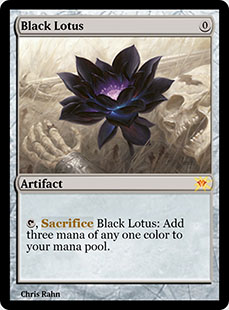
Vanilla Eldrazi
The real break-out deck of this tournament was a new type of Eldrazi deck. White Eldrazi features many of the same creatures that were tearing up the Modern and Legacy formats over the past several months. The main difference is that the White Eldrazi decks also play a few hatebears in the list, and in doing so they gain a powerful interaction.

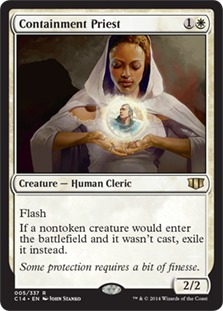
Containment Priest and Eldrazi Displacer are like peanut butter and chocolate. They're both pretty good, but together they're downright amazing. With the Priest in play, the Displacer's ability permanently exiles creatures! Displacer bounces the creature, then returns it. Containment Priest sees that the creature is entering the battlefield without being cast, and poof! It's gone, and it ain't coming back.
This interaction is really quite strong, but alone it is not enough to push a deck into tier one status. Fortunately for all the people playing the deck in the Power Nine Challenge, this list has a lot more going for it.

Here we have one of the four White Eldrazi decks to make Top Eight in this event. This deck finished in fifth place, and it has the Displacer/Priest combo in the main deck. The second place deck was also White Eldrazi, but the list was slightly different and Containment Priest was relegated to the sideboard. Eldrazi is a new archetype in Vintage, so it is only natural that the decks are still coalescing. There were nine Eldrazi decks in the top eight (not including Workshops or colorless varieties), and each deck had subtle differences.
The primary core of the deck is Eldrazi creatures, but there are also various Hatebears to add to the disruptive nature of the deck. Thalia, Guardian of Thraben and Vryn Wingmare act as additional copies of Thorn of Amethyst, but they can also swing for two damage. If you add up the one Chalice of the Void, the four Thorn of Amethysts, and the five total taxing creatures, you end up with ten cheap and disruptive cards.



On the higher end of the curve there are four copies of Reality Smasher and Thought-Knot Seer. Thought-Knot adds another four slots of disruption, and with four toughness it is a tough creature to kill. Reality Smasher is efficient and a great use of the tempo gained by bogging opponents down with Sphere effects.


The Future of Vanilla Eldrazi
Vintage Eldrazi lists, including the White versions, share some superficial similarities with Workshop decks. Shops and Eldrazi are actually quite distinct, and the differences form part of the strength of the Eldrazi decks.
Instead of maxing out on lock pieces, like a Workshop deck, White Eldrazi gets very aggressive. Most Ravager Shops decks are playing eight "Spheres" and a Lodestone Golem, plus Trinisphere and more. In the Eldrazi lists there are no Tangle Wires, even though it would seem like a great fit. In place of the cards that slow opponents down are threats that can actually close out a game.
Fewer inhibitory cards leaves room for more threats, which can overwhelm many opponents. The mana-taxing cards that White Eldrazi does play all effect non-creature spells, which means they provide very little resistance to the pilot of the deck. In contrast, Workshop decks have been cornered into playing extra copies of Sphere of Resistance, a card that can create conflict when trying to resolve mana-intensive spells.
By choosing to eschew Mishra's Workshop, much of the issues around the mana base are now gone. Thought-Knot Seer and friends should usually arrive on curve. Not playing Workshops isn't that big of a loss when you're running Thalia, Guardian of Thraben, because you now have access to eight or more pseudo-Thorn of Amethysts.
White Eldrazi has a very stable mana base that's full of mana accelerants, and it has a large amount of threats. That's still not all that it has going for it. The icing on the cake is that the Eldrazi decks are almost untouched by the traditional anti-Workshop sideboard cards. Usually the game plan against the Prison and Aggro-Prison decks has been to have a sideboard full of Ancient Grudges, Ingot Chewers, or Hurkyl's Recalls. None of the anti-artifact cards do a whole heck of a lot to combat Eldrazi.
The next line of defense against Shops was always removal spells like Lightning Bolt. Bolt doesn't kill the bigger Eldrazi, so pilots will have to start leaning more on Swords to Plowshares and Dismember. Even if your deck does have proper removal, you're probably going to have a hard time keeping up when you're trading one creature for one removal spell. White Eldrazi has as many creatures as a Hatebears deck.
I really think that the Eldrazi deck is going to be a tough nut to crack. Dealing with the deck is far from impossible, but it will take adjustments and sacrificed sideboard space. Sweeper effects might prove to be a good answer, but the best sweepers cost three mana (Toxic Deluge) or more (Supreme Verdict), and casting them while facing Thalia's and Wastelands won't be easy. Massacre could really be helpful to sweep away all of the small Eldrazi and Hatebears.
Going over the top of the Eldrazi with a more powerful deck might be a good solution, but Containment Priest and Thalia, Guardian of Thraben will make that task difficult at best. I'm certain that players will find a way to adapt and deal with these decks, but in the mean time I expect to see them performing quite well. The immediate future looks like it belongs to the Spaghetti Monsters, and it has surely shaken up the format.

The rest of the Power Nine Tournament featured decks that I routinely cover, so I'm not going to go over them this time. If you'd like to see a breakdown of the event, Matthew Murray and Ryan Eberhart did an analysis of the event here on themanadrain.com. White Eldrazi was by far the best performing deck, and you should expect to see it if you join a Daily Event!
The German Juggernaut's Burning Wish
Kai Budde won the last slot in the Vintage Super League the other night, and he did so using a deck that was an updated version of OmniOath. While I had missed the live broadcast of the matches, I was told after the fact that Kai had played "Burning OmniOath" and I was very intrigued.
I make it no secret that I love Oath decks. I've had more success with Oath than any other archetype, and I honestly believe the deck always has a chance to do something incredible. Unfortunately for me, the rise of Monastery Mentor decks and the decline of Workshop decks has caused Oath to be in a worse position in the metagame than it once was. Because of this, I'm always on the lookout for different things that can be done within a traditional BUG Oath shell. I've been playing with a couple copies of Omniscience in my deck lately, and it's been quite good. When I heard that Kai had been using Burning Wish, I had to see what it was all about.
The list I'm about to show you is close to what Kai played, and it cashed a recent Vintage Daily Event.

This deck has its roots in the OmniOath decks from the Vintage Super League season two. Those decks could play with four Dig Through Times, as it had not been restricted yet. OmniOath was always a very powerful, yet sometimes extremely clunky deck. With four Omnisciences and two Oath targets, the deck had as many as six cards that you wouldn't want to draw at any given time. Conversely, some of the time you'd have a Show and Tell in hand and you'd be unable to find something to play with it. I played OmniOath back in that time period, and I experienced another problem; sometimes you would Show and Tell an Omniscience into play and you'd brick for the next few turns. Losing a game with an Omniscience in play is plain embarrassing.
Dig Through Time is what stitched the deck together. Just like in the Legacy OmniTell decks, Dig allowed you to "dig" through your deck and hit your win condition. With Dig Through Time restricted, the deck fell to the wayside. Subsequent OmniOath decks usually relied on only one, maybe two copies of Omniscience. With only one or two Omnisciences, the deck has fewer clunky draws and it plays more like a traditional Oath deck.
Burning OmniOath brings the deck back to its roots of being more focused on Omniscience. The important adaptation is the introduction of Burning Wish into the deck, and it gives the deck much more consistency. With Omniscience on the battlefield, Burning Wish can end the game in several ways.
Most of the time the easiest way to win with Burning Wish and Omniscience is to fetch and cast Enter the Infinite. Once you cast Enter the Infinite you'll draw your deck and have one turn to kill your opponent. Simply cast Griselbrand for free, as well as Emrakul, the Aeons Torn. Emrakul will grant you an "extra turn" trigger and you can swing for 22 damage. In the case that 22 damage is not enough, there is also a Tendrils of Agony in the sideboard that can be fetched with Burning Wish.
Tendrils of Agony can also sometimes kill someone by itself in this deck. I have managed to create a lethal Storm count with only Show and Tell and Griselbrand, without an Omniscience.
Adding the Burning Omniscience package to an Oath deck opens up a lot of interesting and powerful possibilities. Before I go on any more about the deck, I'd like to share the version that I've been personally working on. This is a work-in-progress, but I think there is some potential here.

Evolution
When I put together the initial version of this deck that Kai Budde had played, it had one copy of Daze and Misdirection. The first change I made was to swap those out for Flusterstorm. I'm not usually a fan of Daze in Vintage, and it doesn't play well with a hand of multiple Forbidden Orchards. Misdirection is kind of like the fifth Force of Will, but I prefer the efficiency of Flusterstorm. Misdirection can deflect an Abrupt Decay, but in many other cases I'd rather just have Flusterstorm.
The second change I made was to the mana base. I switched the mana base to more closely mirror the one I've been using for my other Oath decks. Kai was not playing Mox Pearl and instead had sixteen lands. I'm used to playing fifteen lands and all five moxen, so the swap was easy and it worked well. The strongest play an Oath deck has is a turn one Oath played with a Mox, so it only makes sense to play as many of them as possible. The Moxen also help ramp up to three mana very quickly. The faster you can cast your bombs the more likely you are to win.
Library of Alexandria has been in all of my recent builds of Oath, and I swapped out a fetch land for one in this list. Oath decks can suffer from games where the lack of an explosive opening play leaves them at a disadvantage. An opening hand with Library of Alexandria can allow you to play a slightly slower game without falling behind on card parity.


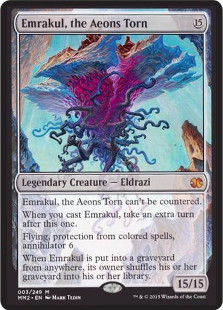
I was running four copies of Omniscience in my initial builds of Burning OmniOath, but a former Vintage World Champion suggested that I try shaving down to only three copies. Playing three Omnisciences has enabled me to find one when I need it, but it also freed up some space for other cards and made for fewer clunky draws. The three Omni's and two Oath creatures give the deck five cards to enable Show and Tell, and that feels like plenty.
I have been testing a single Jace, the Mind Sculptor in the slot formerly occupied by Omni number four. So far Jace has been an asset. Having one Mind Sculptor is nice as it has a lot of utility in an Oath deck, and it gives the deck more ways to survive the midgame and beyond. Jace can also sometimes soak up an opponent's Force of Will, creating a path for Show and Tell or Oath to resolve.
Sideboards and Wishes
I also worked on the sideboard a little bit. Most of the cards are the same ones that were in the original list. I felt that adding Yawgmoth's Will as a Burning Wish target was a great idea. Burning Wish has been used to fetch Yawgmoth's Will for years, and in this deck it is especially potent. If you end up activating your Oath of Druids you'll usually end up with a huge graveyard. Casting Burning Wish for Will might just let you replay your Time Walk to seal the deal, but it could also lead to a lethal Tendrils of Agony in some situations.




It's quite possible to Oath into Griselbrand, draw seven cards, then Wish for Will. If you have a Black Lotus in your hand or the graveyard, you could make a lot of extra mana, and replay the Wish to fetch and cast Tendrils of Agony. This isn't a play that will happen all the time, but it's nice to have the option. Even if you only end up taking an extra turn or two with Yawgmoth's Will, it will have earned its sideboard slot.
The sideboard I've been using for this Burning OmniOath test list needs some fine-tuning to say the least. VSL decks need to only cope with a small metagame, and surviving against all of the decks in Vintage takes a well-designed sideboard that accounts for a wider field.
The biggest issue with making a sideboard for a Burning Wish deck is space. When you're playing a Wish in your deck, you have to make a "Wish-board." These are sideboard slots designed to be fetched with your Wish spell. It's tempting to fill your sideboard with silver-bullet Wish targets, but doing so takes up so much space that you're unable to have a real sideboard. The current sideboard configuration works very well as a Wish-board, but I feel that there aren't enough answers to certain problems.
I usually play Strip Mine and Pithing Needle in my Oath decks because both cards can answer Karakas. Pithing Needle is also good against an opposing planeswalker, and in particular it stops Jace from bouncing your threats. I would prefer to come up with a sideboard that can address this issue, and I'd also like to make room for more anti-Shops cards. Nature's Claim is another card that I usually use, and currently there's no space for it.
Beating the Hate: Is Burning OmniOath a Contender?
The aspect of Omniscience that is the most attractive to me as an Oath of Druids player is that the enchantment side-steps all traditional Oath hate. In the past Show and Tell was how Oath decks beat hate cards like Grafdigger's Cage. Nowadays Oath pilots have to contend with Containment Priest, and Show and Tell alone won't work. Having the ability to cheat creatures into play with Omniscience adds a new angle of attack.
Omniscience undoubtedly adds a lot of power to an already powerful deck. Even though it's a fun and absurdly broken deck, I'm not completely sure that the extra baggage that the Burning/Omni brings is worth it. Overall Burning OmniOath is much more complicated than a normal Oath deck. Sometimes you might be close to completing more than one of the possible combos in the deck, and you'll have to figure out which lines to take. Other times you can lose to the added variance that the deck has. Even with Burning Wish, it is possible to lose the game with an Omniscience on the battlefield! In my experience Omniscience leads to a victory in the vast majority of situations, but the combo is much harder to assemble than you might think.
I don't know for sure if this deck will catch on, or even be successful. I really hope that it does turn out to be a contender, because the deck is an absolute blast to play. The only thing that feels better than casting an Emrakul in Vintage is casting an Enter the Infinite!

That's all the time I have for this week! See you in seven days. You can follow me on Twitter @josephfiorinijr - Islandswamp on Magic Online




